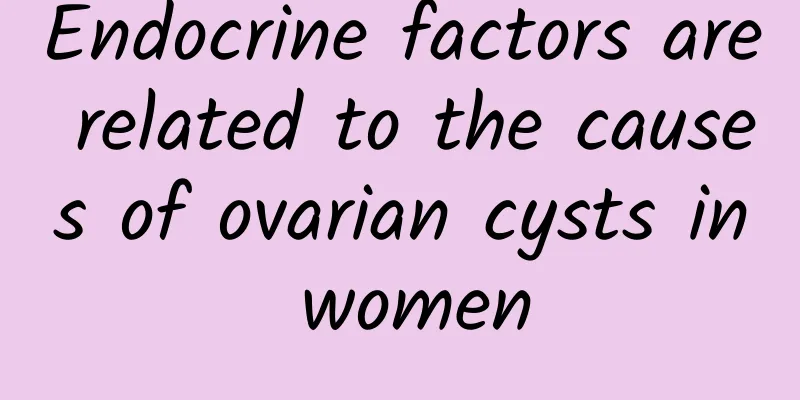What is bilateral polycystic ovary?

|
Polycystic ovary syndrome (PCOS) is the main cause of polycystic ovaries, an endocrine disorder that often causes irregular menstruation and fertility problems. Its causes usually involve genetic factors, environmental influences, endocrine disorders and other aspects. Treatment methods include drug regulation, lifestyle changes and medical intervention. 1. Genetic factors: Studies have shown that PCOS may be hereditary. If there is a female relative with PCOS in the family, the risk of the disease in the offspring will increase. Since the genetic mechanism is not yet fully understood, it is recommended that people with a family history reduce the risk through regular physical examinations and a healthy lifestyle. 2. Environmental factors: Lifestyle and eating habits have an important impact on the occurrence of PCOS. An unhealthy diet, such as a high-sugar, high-fat diet, can easily lead to weight gain, which in turn increases the risk of disease. Improving eating habits and maintaining a healthy weight can effectively manage PCOS. It is recommended to consume more fiber-rich foods, such as vegetables, fruits, and whole grains. 3. Endocrine factors: PCOS patients often have elevated androgen levels, which may affect ovarian function and cause abnormal endometrial hyperplasia. Drug treatment is one of the effective ways to regulate endocrine, usually including oral contraceptives, anti-androgen drugs such as spironolactone and metformin to improve symptoms and balance hormone levels. 4. Trauma and pathology: Although the exact cause of PCOS is still unclear, some studies have pointed out that insulin resistance is closely related to it. Such patients are often overweight or obese, and medical means such as metabolic surgery and medication to correct insulin levels are used to improve the condition. Polycystic ovaries are mainly associated with PCOS, which has various and interrelated causes. In order to effectively manage PCOS, patients are advised to combine the above strategies, including improving lifestyle, receiving appropriate medical interventions and regular check-ups, so as to better understand the dynamics of the disease. For patients with severe symptoms or those who have fertility plans, timely seeking professional medical advice will help achieve better treatment results and quality of life. |
<<: What medicine should I take for cervicitis, adnexitis, and endometritis?
>>: What are the symptoms of pelvic effusion and what causes it?
Recommend
How is cervical hypertrophy diagnosed in women?
Early diagnosis of cervical hypertrophy can reduc...
The nemesis of apple-shaped and pear-shaped obesity! Chinese medicine doctor Liao Qianhui: 2 drinks to quickly slim down your belly and buttocks
Spring is the time for girls to show off their sl...
Will taking Sanjin aggravate candidal vaginitis?
Will taking Sanjin aggravate candidal vaginitis? ...
Anti-aging and weight loss! Homemade Antioxidant Wolfberry Soy Milk
Lycium barbarum is a commonly used Chinese medici...
Calcium tablets replace milk? Expert: The key lies in the absorption rate
Last year, the Taipei City Government launched a ...
Is adenomyosis related to amenorrhea?
Adenomyosis may cause amenorrhea, but not all pat...
The most important treatment for dysmenorrhea in daily life
Among the many cervical diseases in gynecology, d...
What are the symptoms of miscarriage?
All female friends who have been pregnant know th...
What are the dangers of cervical warts?
Cervical warts are particularly harmful to patien...
Papaya helps with weight loss, can papaya seeds prevent cancer? Is papaya really good for breast enlargement? Must-read article
Papaya, once rated as the most nutritious fruit b...
What causes vaginitis?
Vaginitis is inflammation of the vagina, which is...
Can I exercise after abortion?
Can you exercise after an abortion? This is a que...
How to treat intramural uterine fibroids? Common treatment methods for intramural uterine fibroids
How to treat intramural uterine fibroids? Can con...
What is a good treatment for adnexitis?
What is a good treatment for adnexitis? Adnexitis...
What are the effects of cervical hypertrophy?
Cervical hypertrophy may cause adverse effects su...









